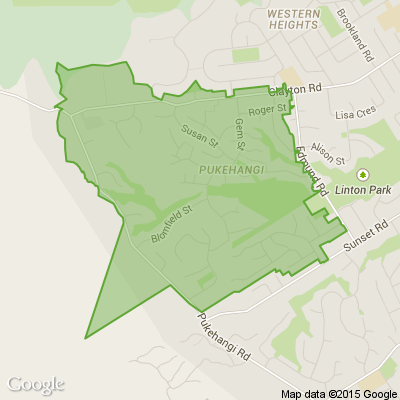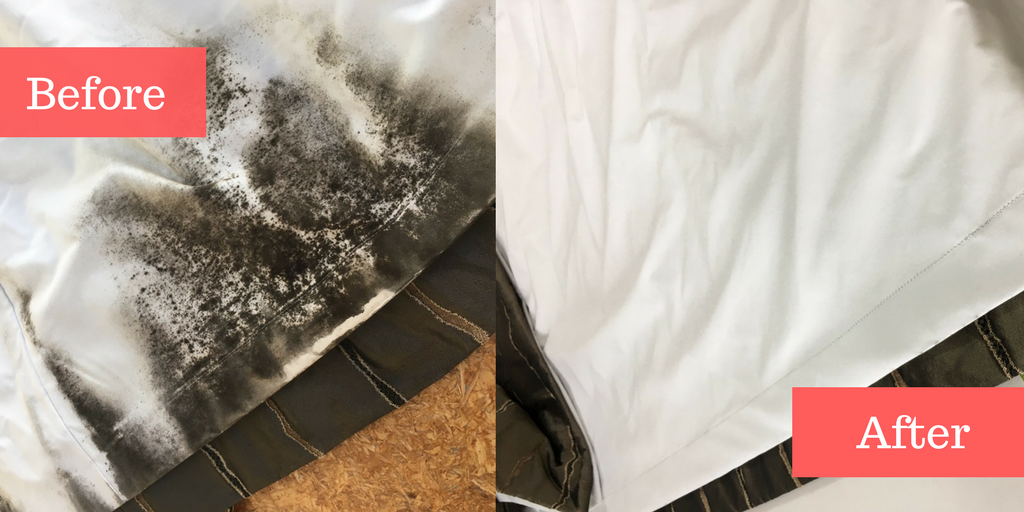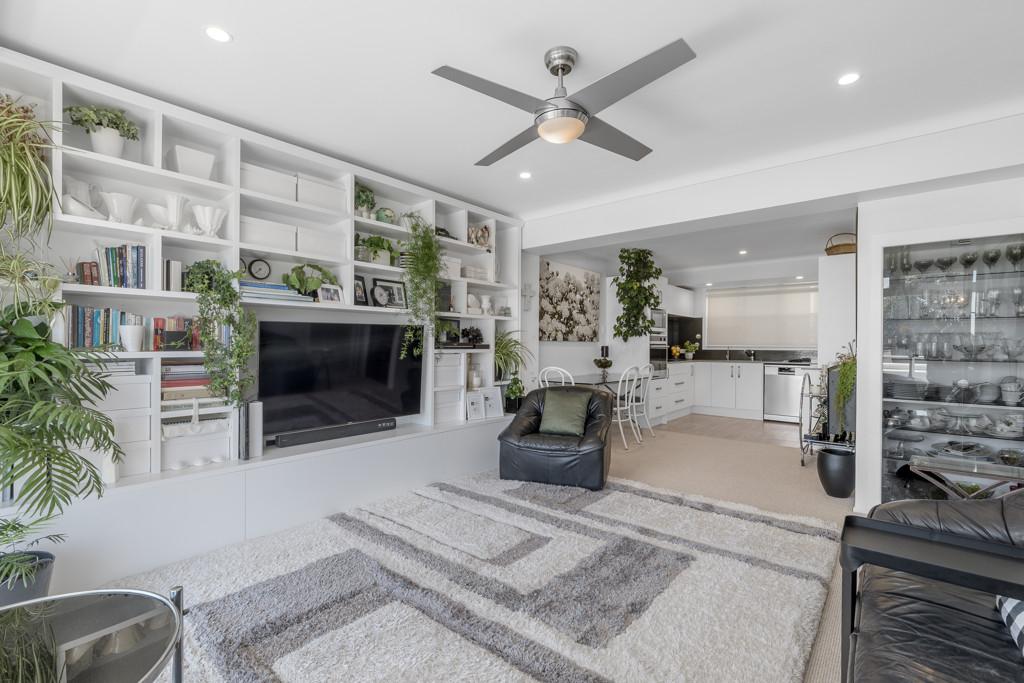
Know what’s happening
Access the private noticeboard for verified neighbours near you. Keep informed about any suspicious activity, send urgent updates to your neighbours when required and discuss emergency planning.
Get to know your neighbours
Browse the directory and start getting to know your neighbours. Don’t want to post to the whole neighbourhood? Send a private message.
Buy, sell and give away
Want to declutter your garage? Buy some used household items? Give away some garden stuff? Become a verified neighbour to browse and post items for sale. Trading is simple when everyone lives nearby.


Got any recipes for great festive treats?
Post them here!

Thank you for using Neighbourly
You may receive an email confirmation for any offer you selected. The associated companies will contact you directly to activate your requests.
Robert Anderson from Curtain Clean Rotorua
Here is a fun and easy way to reuse a plastic bottle! These are the basic instructions for creating a plastic bottle planter. Creative fun for the kids and recycling those plastic bottles? We call that a win-win.
They look adorable with succulents (cactus or herbs would also work) and chances are … View moreHere is a fun and easy way to reuse a plastic bottle! These are the basic instructions for creating a plastic bottle planter. Creative fun for the kids and recycling those plastic bottles? We call that a win-win.
They look adorable with succulents (cactus or herbs would also work) and chances are the planters will last for a while.
You’ll need:
• Plastic bottles
• Sharpie
• Acrylic paint & brushes
• Pencil (for sketching details)
• Scissors
1. Use the sharpie to mark out the shape of your animal on the bottle.
2. With scissors roughly cut out your shapes. After the top of the bottle is removed go back around and clean up the edges. Wipe clean (make sure bottle is clean and dry).3. Paint the bottle with chosen shade of acrylic paint, this will take several coats. Tip: use a hair dryer to speed drying between coats. Spray paint made for plastic can be used if you already have a can at home.
4. Once dry, use the pencil to sketch the eyes, mouth, and other details, and paint over with your desired colours.
5. Fill with soil and your favourite succulents. These also make cute containers to keep anything in (pencils, food, toys, beads) as well as colourful décor for your kids’ room.
We hope you enjoyed our tutorial and if you make a one we would love to see a picture!
www.curtainclean.co.nz...
Julie from Springfield - Tihiotonga
After a sell out performance in 2017 and a recent tour with The Harmonic Resonators, the Nukes are back for 1 night only at QE Health Recreation Hall supported by local ukulele band The Thermaleles. It'll be a great night of catchy original tunes and humour. Tickets from … View moreAfter a sell out performance in 2017 and a recent tour with The Harmonic Resonators, the Nukes are back for 1 night only at QE Health Recreation Hall supported by local ukulele band The Thermaleles. It'll be a great night of catchy original tunes and humour. Tickets from www.rotoruaukulele.co.nz... or Julie 027-2424-132

As we head into the eating season, you might want to think about tracking your fitness. Check out our range of wearable tech, from FitBit, Huawei and Samsung, in-store or online today. smithscity.co.nz – keeping Xmas honest. Visit us online

Chanelle from Pukehangi - Mangakakahi
Kia Ora all,
My 9 year rental has sold and new owners are moving in, sad for me I love this house and have loved living in Sunnybrook and Westbrook over 20+ years, more closer for my kids to their grand parents. Westbrook School has schooled 4 of my children 1 to go and fortunate for me not so … View moreKia Ora all,
My 9 year rental has sold and new owners are moving in, sad for me I love this house and have loved living in Sunnybrook and Westbrook over 20+ years, more closer for my kids to their grand parents. Westbrook School has schooled 4 of my children 1 to go and fortunate for me not so others I have never been burgled, touch wood, so if anybody has a property coming up to Rent or Look after, would love it at a reasonable price and for another 9 years would be fab, but at this time i realize its a rich get richer world and im looking for the robin hoods lol of Land Lords, yes I have and I am actively looking every where I can, so its worth a shot on here. Thanks all
Robert Anderson from Curtain Clean Rotorua
HOW DOES WOOL BIODEGRADE?
All materials of animal and vegetable origin have some degree of biodegradability, meaning that they are capable of being decomposed by the action of living organisms, such as fungi and bacteria. Wool is composed of the natural protein keratin, which is similar to the … View moreHOW DOES WOOL BIODEGRADE?
All materials of animal and vegetable origin have some degree of biodegradability, meaning that they are capable of being decomposed by the action of living organisms, such as fungi and bacteria. Wool is composed of the natural protein keratin, which is similar to the protein that makes up human hair. When keratin is broken down naturally by microorganisms, the products do not pose any environmental hazard.
WOOL READILY BIODEGRADES IN MOIST, WARM CONDITIONS
On disposal, if wool is kept warm and moist or buried in soil, fungal and bacterial growths develop which produce enzymes that digest wool. On the other hand, thanks to the unique chemical structure of keratin and wool’s tough, water-repellent outer membrane, clean and dry wool fibres do not readily degrade. This allows wool products to be resilient and long-lasting in normal conditions.
WOOL BIODEGRADES QUICKLY
Wool biodegrades readily in as little as three to four months but the rate varies with soil, climate and wool characteristics. This releases essential elements such as nitrogen, sulphur and magnesium back to the soil, able to be taken up by growing plants. Some studies found more rapid degradation after only four weeks’ burial in soils. Research has shown that processing treatments such as dyeing and anti-shrink treatment can affect the rate of biodegradation in soil, causing an increase in the initial resistance of wool fabric to degradation. However, this is a short-term effect, typically not persisting beyond eight weeks.
WOOL RETURNS ESSENTIAL NUTRIENTS TO THE SOIL
On burial in soil, wool becomes a slow-release fertiliser providing nutrients for uptake and growth by other organisms. Some have even used wool fertiliser to foster herb and vegetable growth. This is known as natural closed loop recycling; restoring the initial inputs of soil and grass. Other beneficial effects of adding wool to soils include enhanced water holding capacity, improved water infiltration, soil aeration and reduced erosion. Ground-up wool carpet, when used as a fertiliser, increased the dry matter yield of grass growth by 24% to 82%.
WOOL DOES NOT ADD TO LANDFILL VOLUMES OR MICROFIBRE POLLUTION
Natural fibres biodegrade naturally in a relatively short period in soils and aquatic systems and therefore do not accumulate in landfill and oceans. Results from a University of Canterbury study demonstrate that wool degrades in a marine environment. In contrast, synthetic textiles persist for many decades and can disintegrate to small fragments. Commonly known as microplastics, or microfibres when less than 5mm in diameter, these fragments accumulate in aquatic environments and land disposal sites where they have negative effects on ecosystems when consumed by organisms. A single polyester fleece garment can produce more than 1900 fibres per wash. Ingestion has a negative impact on organisms, sometimes causing death through starvation as plastic replaces food in the stomach. Once in the food chain, microplastics potentially also affect human health via seafood consumption.
At Curtain Clean we are all about minimising waste and reducing the amount of uncompostable materials going into landfill. Keep in mind that a lot of fabrics can be washed and don't need to be thrown away! Call us on 07 579 0501 if you have something you'd like cleaned, we can treat almost all fabrics.
NumberWorks'nWords can help by identifying gaps, explaining your child’s learning style, and providing you with recommendations.
Get in touch to learn how tutoring with NumberWorks'nWords can help your child

The Team from Neighbourhood Support New Zealand
This Fraud Awareness Week we are encouraging Kiwis to take a moment to stop and think ‘is this for real?’ when contacted unexpectedly and asked for personal info.
New Zealand Police's Financial Intelligence Unit estimates New Zealanders lose $20-30 million annually to scams.
HOW TO AVOID… View moreThis Fraud Awareness Week we are encouraging Kiwis to take a moment to stop and think ‘is this for real?’ when contacted unexpectedly and asked for personal info.
New Zealand Police's Financial Intelligence Unit estimates New Zealanders lose $20-30 million annually to scams.
HOW TO AVOID A SCAM:
+ A genuine bank or organisation will never contact you to ask for your PIN, password or to move money to another account.
+ Never click on a link in an unexpected email or text – you could be giving access to your personal and financial details.
+ Always question uninvited approaches in case it is a scam. Instead, contact the company directly using a known email or phone number.
+ Don’t assume an email or phone call is authentic – just because someone knows your basic details (name and address, or mother’s maiden name) it doesn’t mean they are genuine.
+ Don’t be rushed into making a decision or financial transaction on the spot – a genuine bank or trusted organisation would never do this.
+ Listen to your instincts – if something feels wrong then it generally is.
If you believe you are the victim of a scam you can contact Police and report the matter via 105.
For more info on how you can prevent yourself, family and friends from being scammed, visit:

Kylie Klein Nixon Reporter from Homed
Remember Bailey Ross, the first time buyer who missed out on the property she'd been saving since she was 16 to own because of a sunset clause? Well, great news! She's secured a home in Lower Hutt.
I caught up with Bailey for an episode of First Rung, our podcast for first time buyers. … View moreRemember Bailey Ross, the first time buyer who missed out on the property she'd been saving since she was 16 to own because of a sunset clause? Well, great news! She's secured a home in Lower Hutt.
I caught up with Bailey for an episode of First Rung, our podcast for first time buyers. She ended up giving me a bit of a masterclass in tenacity and not giving up on your home owning dreams.
Find out how Bailey found her first home, and what it means to her after such a big let down.

At two weeks old, Emma was left at an orphanage in Russia. After three years, Emma was adopted by a New Zealand family and brought here for a new life - but that didn’t work out how it was supposed to. Emma was diagnosed with foetal alcohol syndrome and reactive attachment disorder. Parenting her… View moreAt two weeks old, Emma was left at an orphanage in Russia. After three years, Emma was adopted by a New Zealand family and brought here for a new life - but that didn’t work out how it was supposed to. Emma was diagnosed with foetal alcohol syndrome and reactive attachment disorder. Parenting her became a nightmare, and it ended in tragedy.
Emma has faced more challenges and rejections than most people could cope with. And now, she wants to take on the biggest challenge of her life - finding answers to those most fundamental questions: who am I? Where did I come from?
Watch now

The Team from Neighbourly.co.nz
Diwali has different meanings worldwide depending where you live but primarily it celebrates the triumph of good over evil. Whether you are celebrating at home by lighting lamps & eating treats, or you are going to a nearby festival, we'd love to hear about your Diwali celebrations. Feel … View moreDiwali has different meanings worldwide depending where you live but primarily it celebrates the triumph of good over evil. Whether you are celebrating at home by lighting lamps & eating treats, or you are going to a nearby festival, we'd love to hear about your Diwali celebrations. Feel free to share your photos and best wishes to your community below.

Robert Anderson from Curtain Clean Rotorua
Keep your newly revived curtains looking fresher for as long as possible with our tips!
Minimise the food sources that encourage mould growth
• Clean soft furnishings regularly according to the manufacturer's instructions. This usually involves a regular light vacuum, with less frequent … View moreKeep your newly revived curtains looking fresher for as long as possible with our tips!
Minimise the food sources that encourage mould growth
• Clean soft furnishings regularly according to the manufacturer's instructions. This usually involves a regular light vacuum, with less frequent dry cleaning or laundering.
• Regularly clean windows and wipe down window surrounds and venetian blinds or shutters with a mild detergent in warm water.
• Consider selecting window coverings manufactured from man-made materials, particularly in damp areas such as the bathroom, kitchen and on south facing windows.
Minimise moisture in your home
• Use lids on pots and pans when cooking.
• Never hang clothes to dry inside and vent your clothes drier to the outside.
• Keep your roof, cladding and guttering in good repair.
• Check that stormwater is being discharged to an appropriate outlet.
• Check plumbing for leaks.
• Replace any unflued gas heaters with flued gas or electric heaters.
• Avoid bringing wet clothes or shoes into your home.
Ventilate your home to reduce moisture build-up in the air
• Open north facing doors and windows when you are home during the day, even during the colder months.
• Use exhaust fans in areas where water vapour is created (e.g. the kitchen and bathroom).
• If all else fails, consider a heat recovery ventilation system to replace stale damp air with fresh air.
Maintain an even inside temperature throughout your home to prevent moist air from condensing onto cold areas like windows
• Insulate ceilings, floors and, where possible, walls.
• Improve the insulative properties of your windows by closing your curtains/blinds as soon as the sun goes down each day.
• Replace any thin or unlined window coverings with quality thermal or lined curtains or roman blinds.
• Fit your curtains or blinds as close to the wall as possible to trap air against the window and take your curtains all the way to the floor to prevent air circulating out from under the curtain
• If you are planning any home renovations, consider upgrading joinery to double glazing or installing a retrofitted secondary glazing.

Save up to 25% off 5 / 7 / 9 or 13 day tours of North and South Islands, exclusive to Stuff Travel.
From renowned operator Kirra Tours, these land cruising packages will leave you in awe of New Zealand’s spectacular landscapes, heritage and culture, impressing even the most discerning … View moreSave up to 25% off 5 / 7 / 9 or 13 day tours of North and South Islands, exclusive to Stuff Travel.
From renowned operator Kirra Tours, these land cruising packages will leave you in awe of New Zealand’s spectacular landscapes, heritage and culture, impressing even the most discerning traveller, and creating plenty of memories and stories to share for years to come.
Tours include a private luxury coach, rail tickets, tour guide, some meals and more.
Buy now, book dates later with a NZ based travel concierge.
Find out more

Get your place in shape for the holidays and summer. One of the easiest jobs to get done quickly is to clean and rejuvenate your deck and outdoor furniture. Simply wash down with Resene Timber and Deck Wash then finish with the Resene Woodsman range of wood stains. Choose from a wide range of … View moreGet your place in shape for the holidays and summer. One of the easiest jobs to get done quickly is to clean and rejuvenate your deck and outdoor furniture. Simply wash down with Resene Timber and Deck Wash then finish with the Resene Woodsman range of wood stains. Choose from a wide range of colours, from traditional wood stains to a beachy whitewashed finish. Or go for the natural look with Resene Furniture and Decking Oil.
If you’re planning on a dark colour, remember to choose a Resene CoolColour version of your colour. This will help to reflect more heat to keep your deck and furniture cooler and more comfortable to walk or sit on.
Visit your local Resene ColorShop and see the huge range of options on their woodcare stand to help you bring out the best in your home.
Find your Resene ColorShop

Kylie Klein Nixon Reporter from Homed
One of the best things about working for homed is all the inspiring people I get to chat to. One of my favs, and the most inspiring was Tracey Hemingway, who as The Debt Free Diva offers advice and guidance on getting your finances under control and working for you.
She knows what she's … View moreOne of the best things about working for homed is all the inspiring people I get to chat to. One of my favs, and the most inspiring was Tracey Hemingway, who as The Debt Free Diva offers advice and guidance on getting your finances under control and working for you.
She knows what she's talking about, too. Not only did she smash more than $90k of debt in three years, but in the year since she paid it off, she's saved enough, on top of her Kiwisaver, to pay the deposit on a home of her own.
It wasn't easy, and Tracy would be the first person to tell you that! But it is doable. Check out how, and have a listen to our episode of First Rung about Settlement day, on this link below. It includes some tips from Tracy on setting up a budget to manage your finance when you have a mortgage to pay.

20 replies (Members only)
Kylie Klein Nixon Reporter from Homed
I've always thought of reno blogging as a way to document a difficult process in a fun, relatable way. The benefit? Emotional support and maybe advice from folks following your journey - and maybe a little ego bump from showing off your mad wallpapering skills.
If you're lucky, and good,… View moreI've always thought of reno blogging as a way to document a difficult process in a fun, relatable way. The benefit? Emotional support and maybe advice from folks following your journey - and maybe a little ego bump from showing off your mad wallpapering skills.
If you're lucky, and good, you might be given a couple of cans of paint from your local hardware store, to help you on the way - but that would be the icing on the tip of the social media cake.
Few of us would have the energy or knowhow to turn their reno into a part time side hustle that's both creatively fulfilling, and engaging.
But that's exactly what Moochstyle's Shayden and Georgia Whipps have done - with some pawsome help from their gorgeous dog Frankie. They've been blogging their Christchurch villa reno since they bought their home and Shayden shared their story with us for the final episode of First Rung, our podcast. A first time homeowner and renovator, Shayden is such an inspiring guy to chat with. He makes you want to jump in and give it go. Check out his story and let us know what you think.

 Loading…
Loading…
Are you sure? Deleting this message permanently removes it from the Neighbourly website.
 Loading…
Loading…

 Buyer Enquiry Over $680,000
Buyer Enquiry Over $680,000


 Marketed by Anny Nicholson
Marketed by Anny Nicholson

 Tender
Tender



 Marketed by Brett Ashworth
Marketed by Brett Ashworth

 $1,750,000 + GST (if any)
$1,750,000 + GST (if any)



 Marketed by Lindy Nelson Parker
Marketed by Lindy Nelson Parker
© Neighbourly 2025
